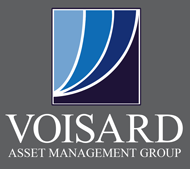Looking to maximize your charitable impact while minimizing your tax burden? Explore effective charitable giving strategies for optimal results. Giving back to your community can be incredibly rewarding. This article explores three powerful strategies for individuals who want to support worthy causes and keep more money in their pockets. Within these strategies, we’ll examine how they empower individuals to receive benefits from charitable contributions.
Qualified Charitable Distribution (QCD)
A Qualified Charitable Distribution is a great way to gift with pre-tax assets. The strategy allows you to gift directly out of an IRA account to a qualified charity. When you gift directly to a charity, you do not report the QCD amount on your income tax return, enabling tax-free distribution of funds from your IRA. Unfortunately, like many sections of the tax code, this does not apply to everyone. To qualify for a QCD, the owner of the account must meet the following criteria.
-
You must be at least age 70½ at the time you request the QCD.
- Request the distribution from an eligible account:
-
- Traditional IRA
- Inherited IRA
- SEP IRA (Inactive plan only)
- SIMPLE IRA (Inactive plan only)
-
Request the check to be payable to the qualified charity.
It’s important to emphasize that the maximum amount for a Qualified Charitable Distribution (QCD) per person annually is $105,000, with eligibility starting at the age of 70½. When individuals reach 73 years of age, they must take distributions, known as Required Minimum Distributions (RMD), which also include QCD distributions.
For an individual who does not itemize deductions and is gifting $10,000 annually, executing a QCD provides tax savings of $2,200 assuming they are in the 22% federal tax bracket.
Appreciated Property
Gifting appreciated assets is a strategy that is available to anyone. By gifting an appreciated asset such as a stock directly to a charity, there is no capital gain realized. When the charity subsequently sells the appreciated stock, they do not realize any gain due to their non-profit status. The only party who loses on this transaction is the government.
For example, let’s assume John is charitably inclined and would like to donate $25,000 to his church’s building project. He could donate cash or his highly appreciated stock. Assume he purchased the stock for $10,000, and it now has a current value of $25,000. By transferring the stock directly to a qualified charity, John will save $2,250 in capital gains taxes (assuming a long-term capital gains rate of 15%).
Tax Year “Clumping”
For those who are inclined to support charitable giving strategies causes and expect to do so on a continuing basis, a third option emerges. While gifting the usual yearly amount may not be enough to bring a married couple over the $29,200 standard deduction, clumping several years together could. There are several options regarding how to do this, however, the easiest way is to simply write a check (or gift an appreciated asset) to the charity for both this year’s and next year’s expected gifts. In the first tax year, the couple would itemize, followed by a second year of taking the standard deduction. This process repeats itself year after year.
Contribution to a DAF
A slightly more complex strategy, although still not overly complicated, is utilizing a donor advised fund (DAF). It is important to understand some of the implications of a donor advised fund. First, all contributions to DAFs are tax deductible in the year that they are contributed. Upon the contribution to a DAF, the donor retains discretion in selecting the recipient(s) of charitable contribution. The fund operates similarly to a foundation but without the costs and complexity. DAFs are easy to set up, easy to maintain and invest in, and are very cost effective.
Charitable Giving Strategies
Consider a couple who regularly gifts $10,000 per year. Assuming other itemized deductions of $11,000, they are still taking the standard deduction ($29,200) and are therefore not receiving any benefit from their charitable giving strategies. Assuming they plan on making charitable giving strategies in the future, they could donate $50,000 to their Donor Advised Fund in the current year. This would provide an itemized deduction of $61,000 in the current year and would allow them to simply use the DAF to gift $10,000 for each of the next 5 years. Assuming the married couple is in the 22% tax bracket, the value of the additional deduction of $31,100 would produce tax savings of $6,842 in the current year for future gifts that would otherwise derive no tax benefit.
Summary
Voisard Asset Management Group is always looking for ways to reduce our client’s tax liability by utilizing the specifics of their situation to take advantage of the current tax law. Each circumstance is unique and requires an individualized analysis of their situation to determine the optimal gifting strategy. As is customary, individuals utilizing these charitable giving strategies should consult with their professional advisors to ensure appropriate implementation. Ultimately, our objective is to help our clients achieve their goals while reducing income taxes along the way.


